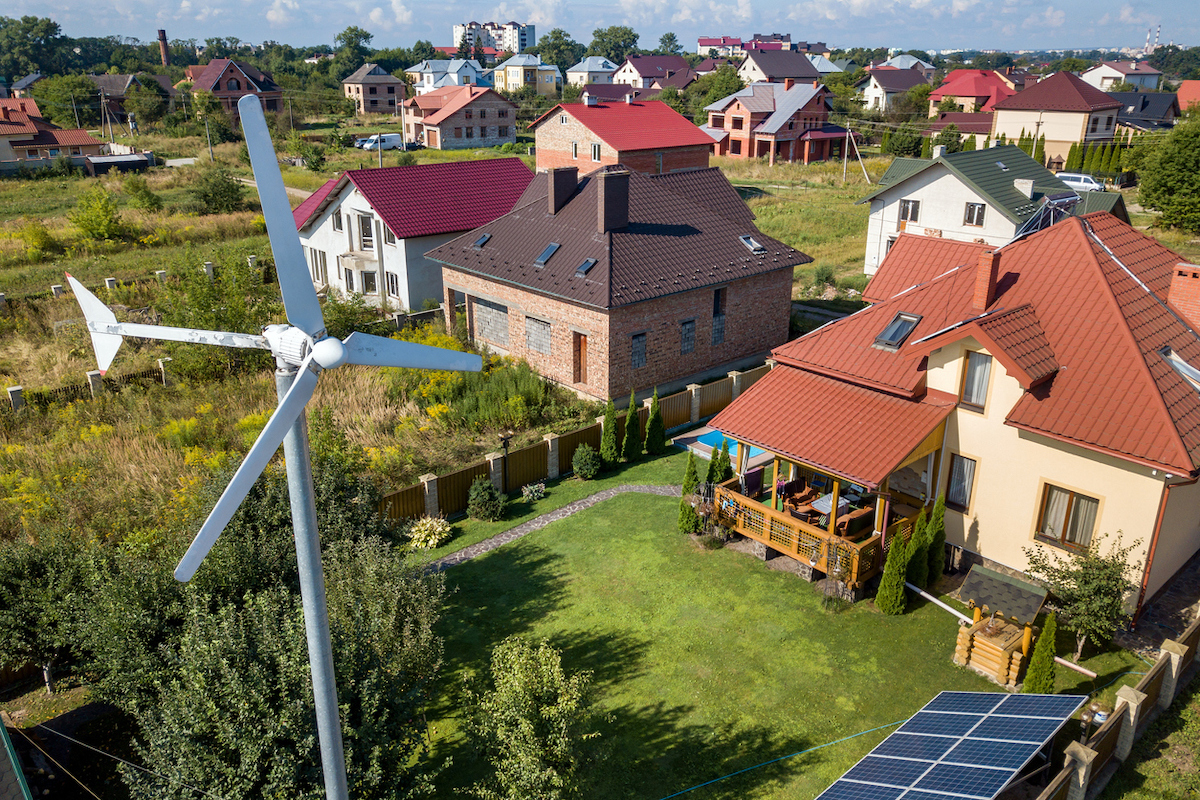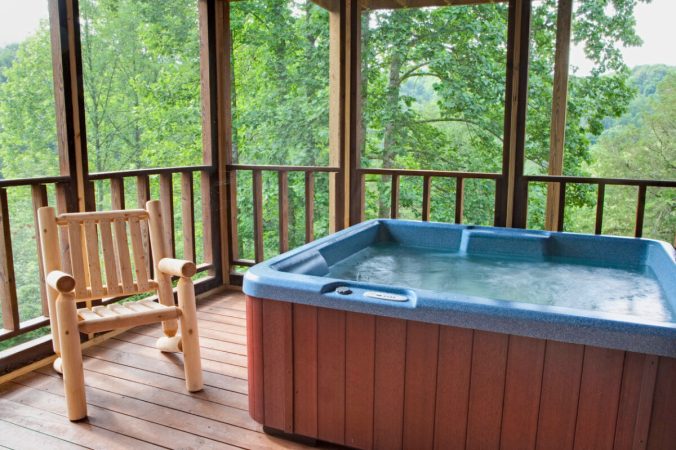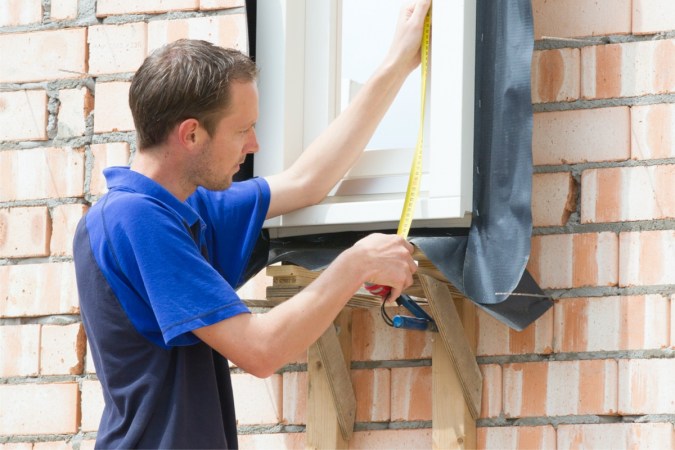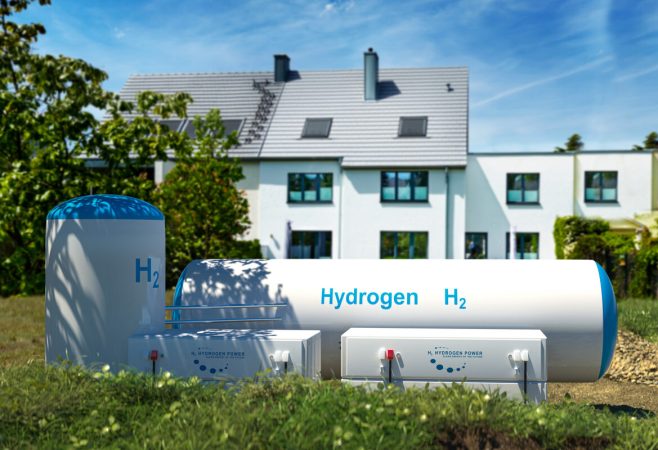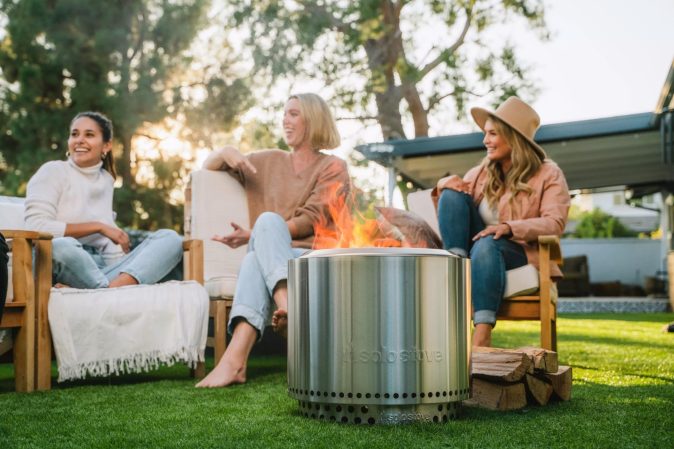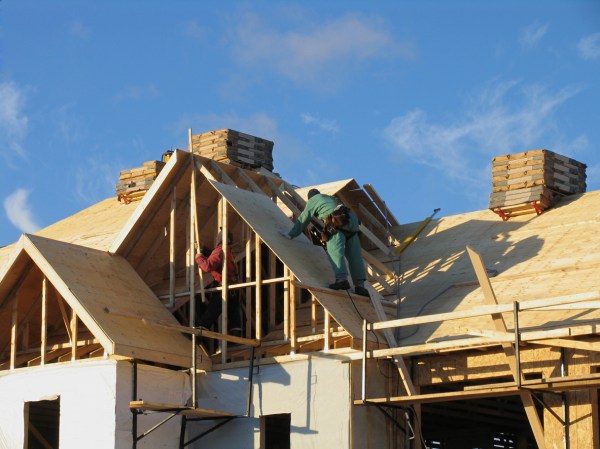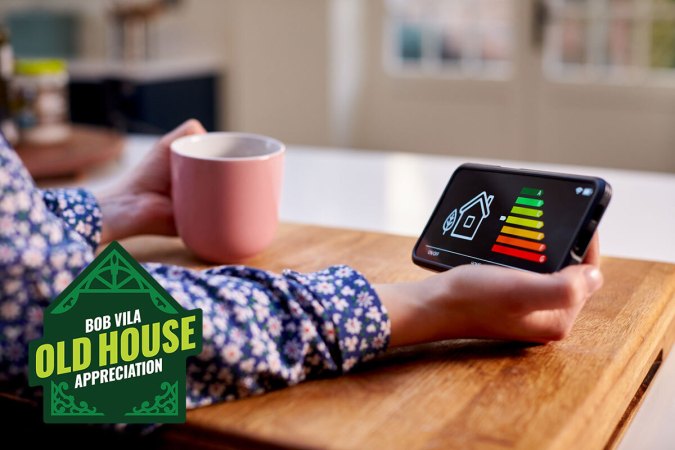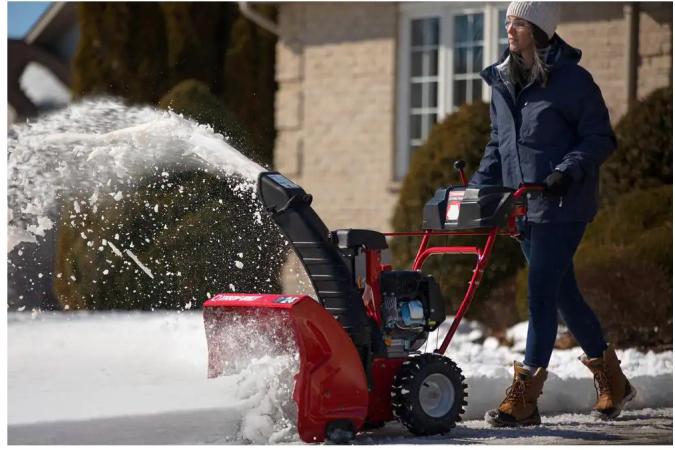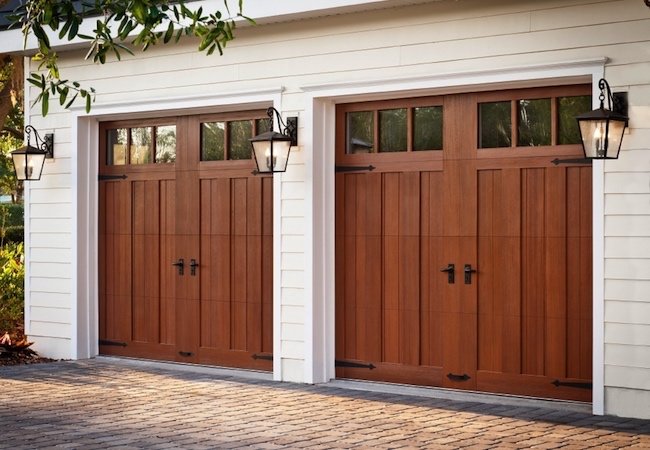We may earn revenue from the products available on this page and participate in affiliate programs. Learn More ›
Installing a residential wind turbine can help generate clean energy for your home, RV, or even a boat or camper. However, a wind turbine for home use is an investment, and as such, it’s important to be sure that your home has the right conditions for the turbine to produce maximum usable power.
When you’re considering some of the best residential wind turbines, here are eight important things to know before you start producing wind energy on your property or when traveling.
1. Residential wind turbines provide clean, renewable energy to individual homes.
Wind turbines convert wind energy into usable electricity. The wind turns the blades of the turbine to power a rotor, which spins a small generator in the product. As the generator runs, it produces energy. The wind turbine connects to a home’s electrical system via an inverter, which converts the turbine’s DC power into AC power for your home.
Some wind turbines also come with a solar battery to store wind energy for use even when there’s no wind. In some cases, you may be able to purchase a separate solar battery for use with your home turbine for even more energy storage.
Home wind turbines are much smaller than commercial turbines and produce less energy. However, they are convenient for generating clean, renewable energy to power homes, RVs, campers, and boats.
RELATED: The Best Solar Companies
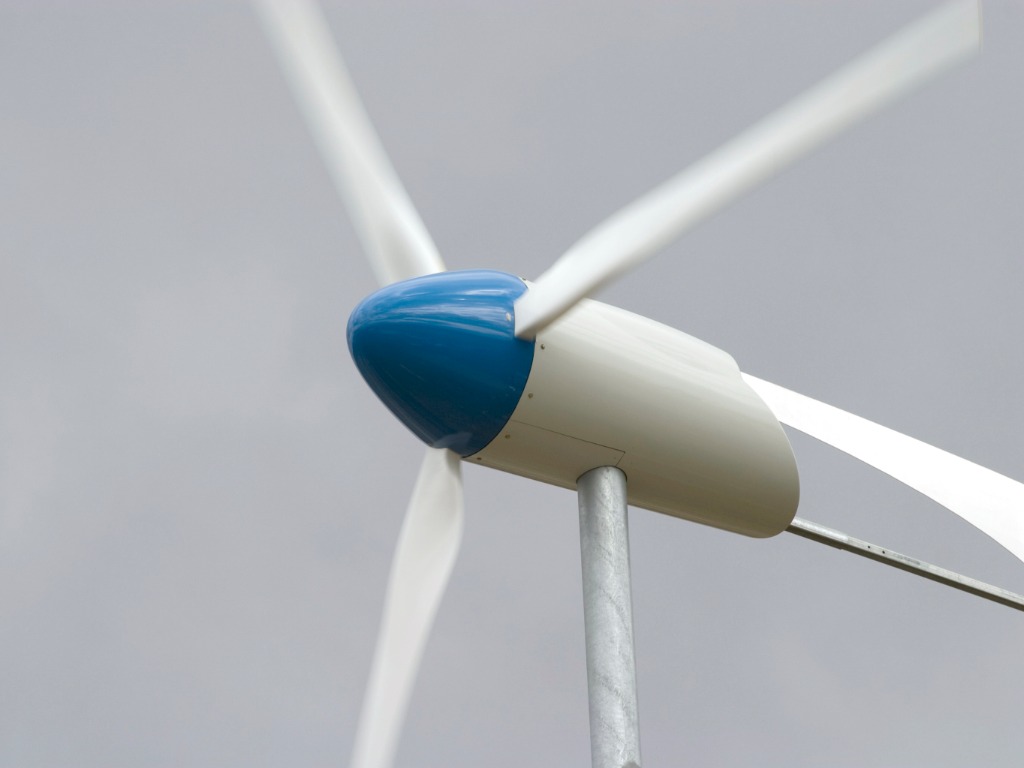
2. The average annual wind speed and prevailing direction are key factors for determining site viability.
Installing a small wind turbine for a home can be an excellent way to generate renewable energy—if enough wind blows on the property. Wind turbines have what’s called a “cut-in,” or starting wind speed, meaning they will not generate energy until that wind speed is achieved.
Cut-in speeds for residential wind turbines can range from 5 to 10 mph. However, wind turbines also have what’s called a rated wind speed, which is the speed at which a turbine will produce the maximum amount of power. Rated wind speeds can range from 15 to 50 mph, depending on a turbine’s size.
The direction of the wind matters as well, since it will affect the energy output of the turbine. While this doesn’t apply to vertical wind turbines, upwind turbines should face into the wind and downwind turbines should face away.
To calculate your area’s average annual wind speed, check the USDA’s Wind Rose Dataset for the nearest city in your state or track daily wind speeds in your area. Generally, a residential wind turbine is only a worthy investment if you regularly have winds of at least 10 mph at your home.
3. Local terrain and nearby structures can greatly affect wind resources.
It’s essential to evaluate any structures or geographic obstacles that could affect the amount of wind that reaches a turbine. Outdoor elements that can block the wind include your home and any outdoor structures surrounding the home, such as garages, barns, sheds, and other outbuildings. Natural obstructions, such as trees and rock formations, also can impact wind resources.
Wind turbulence can extend to three times the height of an obstacle. Therefore, residential wind turbines should be positioned at three times the height of any large obstacles and 500 feet away from them to ensure they produce maximum power from adequate wind speeds.
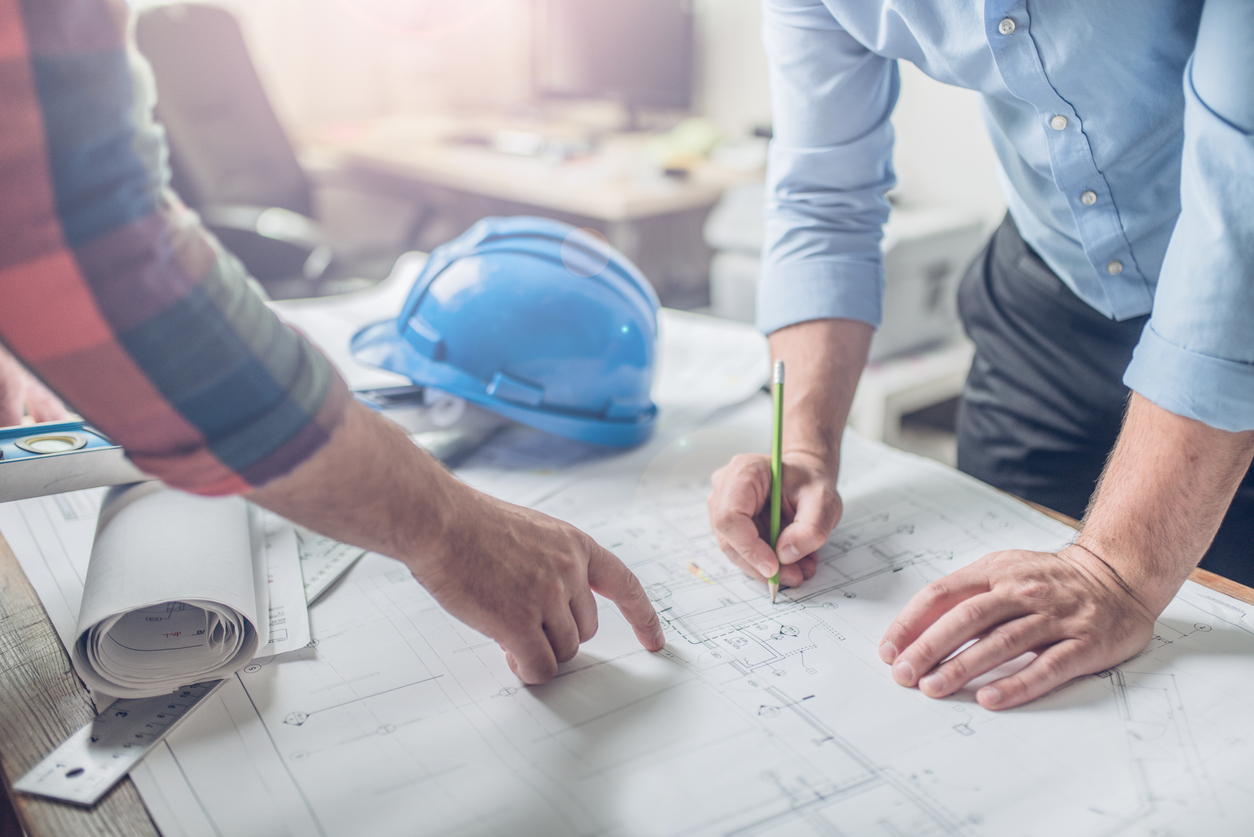
4. Zoning ordinances can restrict the height and noise level of wind turbines for home use.
If you’re considering a small wind turbine but live in a neighborhood with an HOA or zoning regulations, it’s essential to check their requirements before investing in a home turbine. Although residential wind turbines are on the small side, they still might violate height requirements for certain communities.
For example, some neighborhoods or cities restrict the height of wind turbines to only 35 feet, while others might restrict the height to 500 feet. You also may need to refer to local building codes to ensure a wind turbine generator mounted to the house or an outbuilding will not violate safety code or zoning requirements.
RELATED: 5 Ways to Live as Green as Your Grandparents Did
5. Wind energy can be unpredictable.
Unlike solar energy, which tends to be more reliable, wind energy can be unpredictable. There are many factors that influence the amount of wind, including (but not limited to) obstacles, temperature, and air pressure.
Wind won’t generate any power if it’s blowing slower than the turbine’s cut-in speed, while high wind speeds will only produce a set amount of power because of rated wind speeds. If a turbine doesn’t have a battery, it will not be able to store power for use when there’s no wind.
Additionally, residential wind turbines have a maximum wind speed, which is the wind speed they can tolerate before they become prone to damage. If you live in an area with high winds, you need to ensure the turbine you’re considering can handle the wind speed in the area.
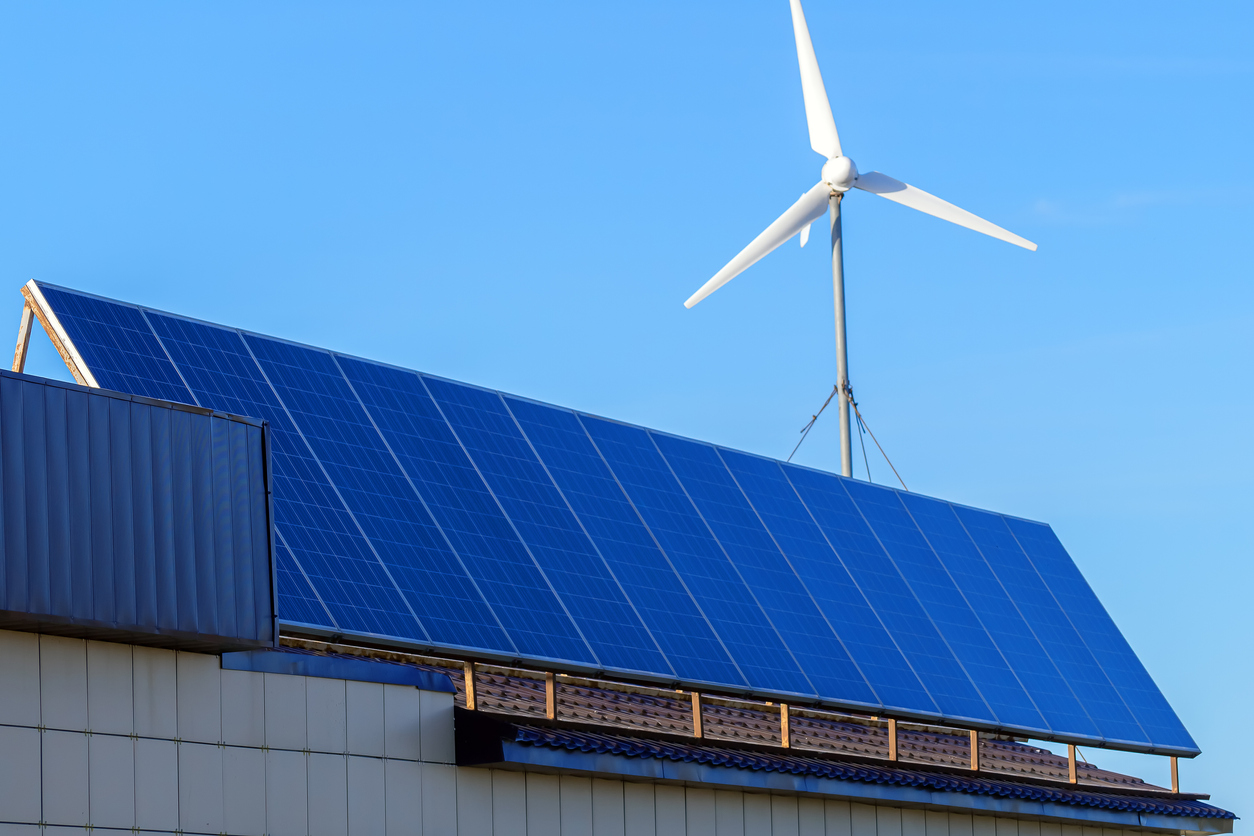
6. Grid-connected systems can help reduce utility bills and provide backup power during outages.
It’s possible to connect a residential wind turbine to the power grid, which can help reduce your home’s energy bills, depending on how much power your turbine produces. In addition, if your wind turbine has a battery for energy storage, you can use this on days when it’s not windy or potentially as a backup during power outages.
Off-grid turbines differ because they are not connected to the power grid. While these systems can be more involved and expensive to install and maintain, they can provide a more sustainable energy source, especially when used in combination with solar energy.
7. Wind turbines can pose risks to birds and other migrating wildlife.
Wind projects don’t impact wildlife as much as cars or planes, but they do have some negative effects. Although it’s more of a concern for large wind farms and commercial wind turbines, large residential turbines can potentially pose a risk to local birds and wildlife.
Birds and bats can be injured or killed by home wind turbines, and they also can affect the migration habits of birds and insects. While there’s not much you can do to prevent this environmental impact, there are some things you can try, such as painting your turbine black, installing an ultrasonic sound machine near the turbine, and placing it in a location where birds and bats are less likely to fly.
RELATED: What Are the Advantages of Solar Energy? 5 Reasons to Invest in Solar Power Now

8. Tax credits can help offset the cost of installing a home wind turbine.
Small residential wind turbines can qualify for energy tax credits, which can help offset the cost of installing the turbine at a home. However, in order to qualify, the turbine must produce no more than 100 kilowatt hours of energy for residential use. The home does not have to be your primary residence, and the tax credits will include the installation cost of the turbine. Even better, both existing and new construction homes qualify for the tax credit.

